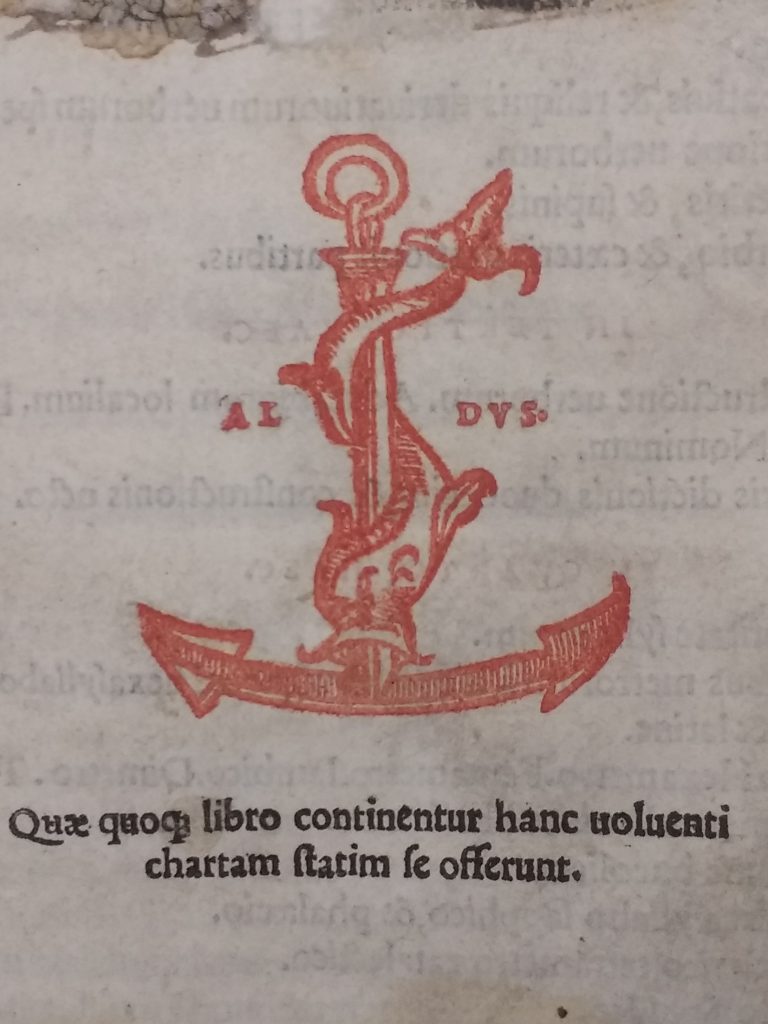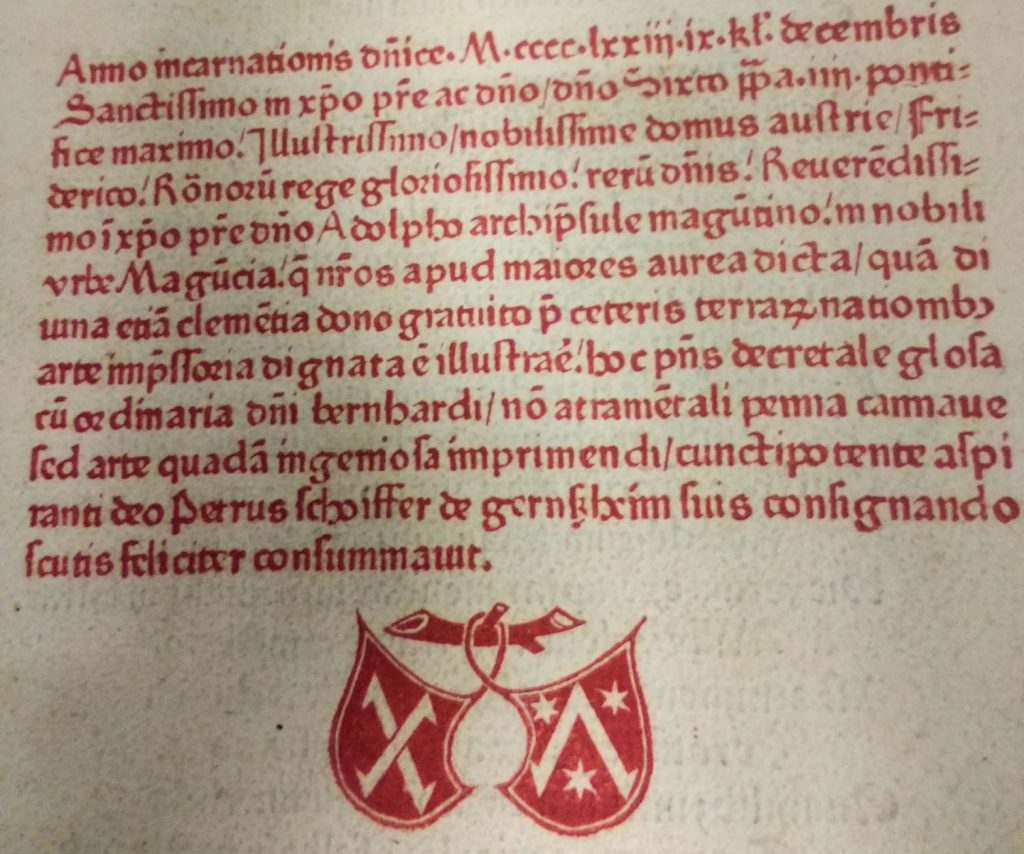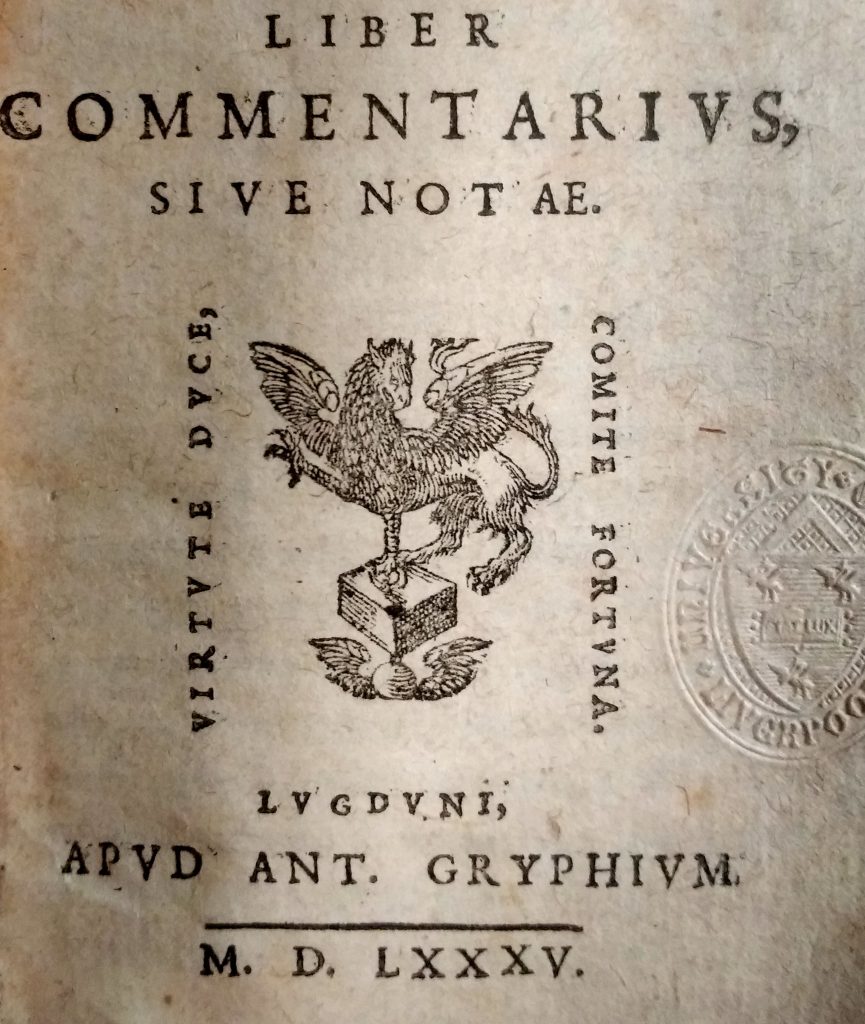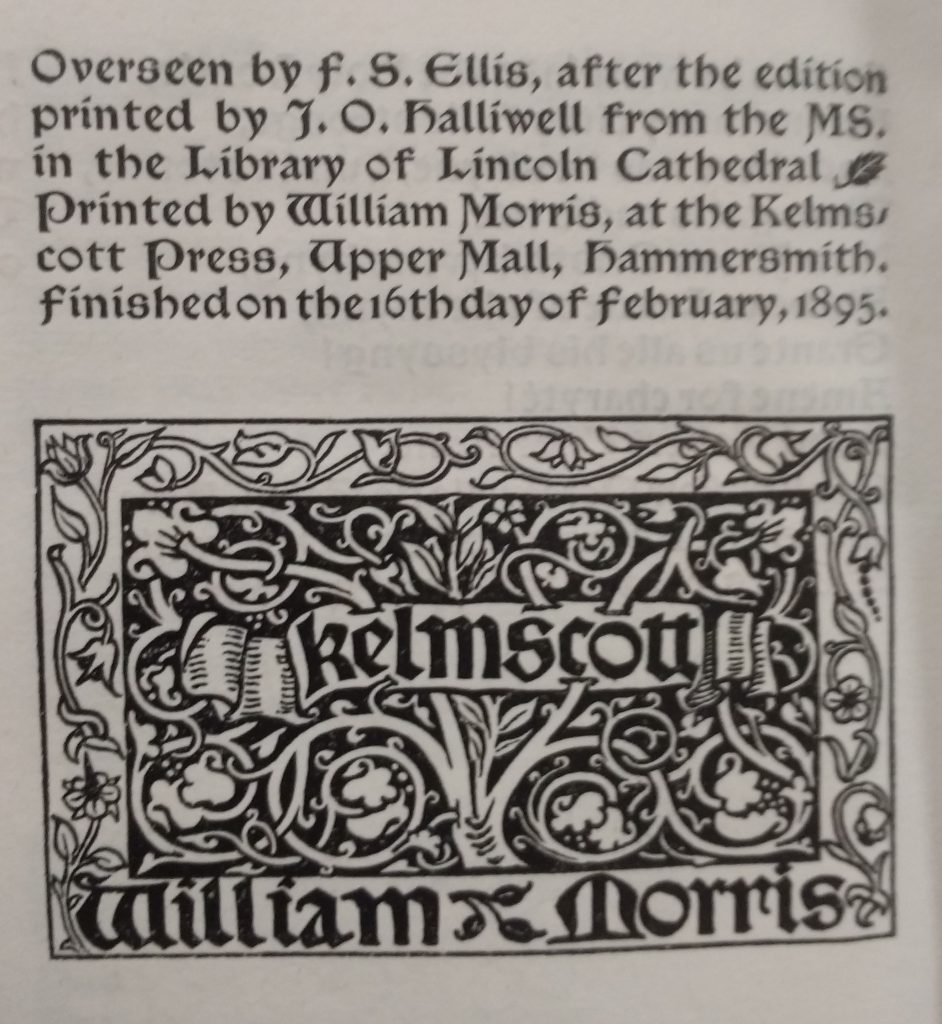A ‘printer’s device’ (also known as a printer’s mark or emblem) is a form of trademark, used widely by early printers from the 15th to the end of the 17th century. Devices were initially employed primarily as a means of differentiating a printer’s work from forgeries and imitations. However, they soon came to be seen, in addition, as a marker of quality, familiarity, and style. In effect then, they represented an early form of logo; a marketing tool and security device.

Devices are most often found directly above or below the imprint (publication details such as name of printer, and place and date of printing). As very early books were printed without a title-page, it is not uncommon to find these details at the end of the main text, in what is called a colophon, particularly in books printed before 1500.

The imagery used in a device can be armorial, or might involve an allegorical vignette, or a pun on the printer’s name or character. Jacques and Estienne Maillet’s device includes a picture of a mallet, for example, whilst Gaillot de Pré used an image of a ship’s galley and both Sebastian and Antonius Gryphius a griffin:
Sometimes devices also includes the printer’s name and/or motto, as in this more modern exmple from the Kelmscott Press:
For more information on printer’s devices see “Printer’s marks” by W. Roberts.

